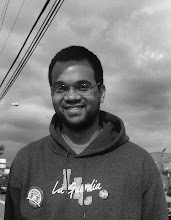You may have seen this photo before.
It has an interesting story to tell.
According to adweek.com, this advertisement was published following the assassination of John Lennon.
His murderer, Mark David Chapman, shot him with a .38 special revolver.
On March 30, 1981, the same year this ad was apparently published; John Hinckley nearly assassinated Ronald Reagan.
He was armed that day with a .22 caliber handgun.
Grievously wounded during the shooting was White House Press Secretary James Brady; whose injuries left him permanently disabled.
Surviving the near-fatal encounter, Brady, along with his wife Sarah, went on to found the Brady Campaign to Prevent Gun Violence; the organization the Brady Act - which mandates a five-day waiting period and background check for all federally registered handgun purchases - originated from.
The Brady Campaign was formerly known as Handgun Control, Inc.; the same organization that paid for the ad above.
Since that time, the U.S. Supreme Court has ruled the Second Amendment protects an individual's right to own a legally purchased handgun (see D.C. v. Heller.).
Writing for the majority, Justice Antonin Scalia wrote, "Whatever the reason, handguns are the most popular weapon chosen by Americans for self-defense in the home, and a complete prohibition of their use is invalid."
He also wrote, "We therefore read Miller to say only that the Second Amendment does not protect those weapons not typically possessed by law-abiding citizens for lawful purposes, such as short-barreled shotguns...It may be objected that if weapons that are most useful in military service – M-16 rifles and the like – may be banned, then the Second Amendment right is completely detached from the prefatory clause."
Therefore, the U.S. Constitution protects only the right to own a gun, but not a particular type.
So, why is there such hostility by gun-rights advocates towards a mere magazine-clip measure?
By far, that would be the least restrictive ownership related provision; which is to say nothing of an assault weapons ban reinstatement.
The above poster suggests it is not gun-ownership, but dangerously permissive laws and our perverse and boastful gun-culture that have lent themselves considerably towards the innumerable deaths caused by firearms in the U.S.
Why else is the CDC banned from conducting research on gun-violence?
Why else is the ATF's National Tracing Center using an outdated paper filing system instead of a national database to track federally registered gun-sales?
Why else are licensed gun owners allowed to carry their firearms on-board an Amtrak train, or at a National Park?
These are the questions that overzealous organizations like the NRA have managed to evade by railing against so-called "elitists" - like city mayors and police captains - who would dare attempt to trample on our constitutional liberties.
Worse still, too many of our lawmakers in Congress equivocate on the question of whether they would support gun-safety legislation.
They try to defer any thoughtful conversation about the issue; often suggesting any gun-safety bill focus exclusively on mental health, which is a total cop-out.
Yes, the access and quality of mental health services in America still leaves much to be desired; and should be scrutinized.
But the issue is not only about preventing another Newtown, Aurora, or Tucson.
It's also about getting illegally purchased firearms off the streets of rural and urban communities, alike.
It's about preventing another Hadiya Pendleton.
It's about preventing another Brian Terry...
or Operation Fast & Furious.
So, why can't we agree to help the police from being outgunned by dangerous felons?
Why can't we agree to make suicides or acts of domestic violence by firearms preventable?
How many more people have to die before we can all agree that we need to take reasonable steps to reduce gun-violence?
It's been time enough.

